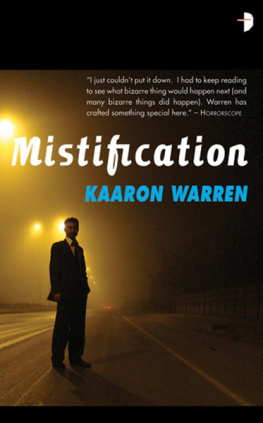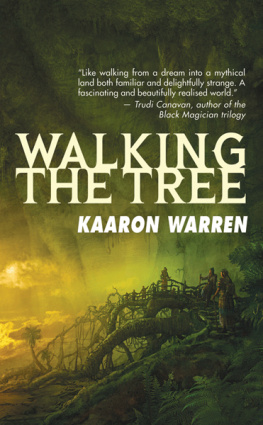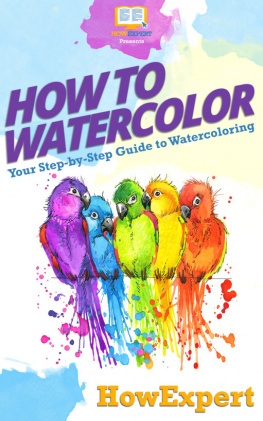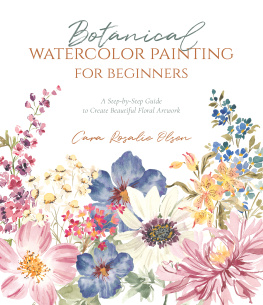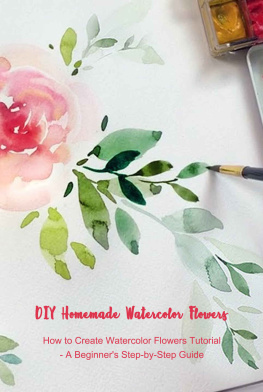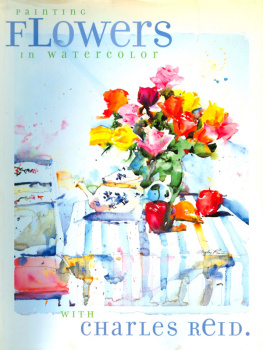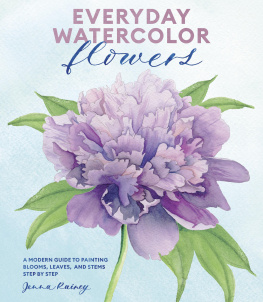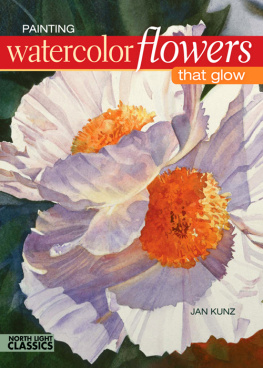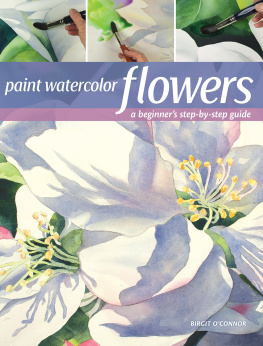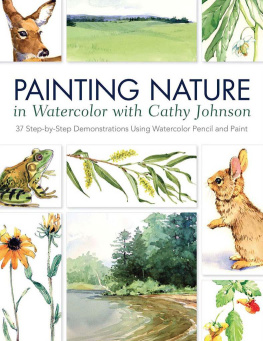Soon Y. Warren
Thank you for purchasing this Artist Network eBook.
Sign up for our newsletter and receive special offers, access to free content, and information on the latest new releases and must-have art resources! Plus, receive a coupon code to use on your first purchase from NorthLightShop.com for signing up.
or visit us online to sign up at
http://artistsnetwork.com/ebook-promo
Contents
Dedication
I dedicate this book to my mother, whose love of flowers introduced me to flowers and gardening, and to my husband, Peter, whose support and encouragement made my lifelong dream of painting possible and enjoyable.
YELLOW AND BLUE
15" 22" (38cm 56cm)
140-lb. (300gsm) cold-press Winsor & Newton
Introduction
Updating this book, now titled Painting Vibrant Flowers in Watercolor, has brought back many fond memories of the past fifteen years of my career as a watercolor artist. I always knew I wanted to paint, but never dreamt of writing instructional books to teach those who share my passion of painting watercolor. My goal as a teacher has remained the same: to guide your artistic journeysometimes with a subtle nudge and other times with less gentle persuasion.
Over the years, many acquaintances have asked how I started writing art instructional books. My answer has always been simple and short, I entered Splash. Back in 2004 when I was happily painting full-time, I had the honor of having two paintings published in Splash 8. From there I was introduced to Jamie Markle, an acquisitions editor at North Light Books, and the rest is history.
My basic thoughts and ideas about painting have slowly evolved over the past decade. Ive always painted using the same basic processes, but Ive adopted a few new methods and some different materials. I have also made a few small changes to my palette, adding new colors and using some old colors more sparingly.
One thought that has never changed is my daily astonishment of how wonderful and awesome the watercolor medium is! Why? Because there are no unbreakable rules in watercolor painting! To make it work for you all you need is to understand several very basic principles and elementary techniques. Once youve mastered the basics, find your own style by investing as much time as you can painting and experimenting. Learn what is most comfortable and enjoyable for you. It is also important to cultivate your drawing skills in order to execute outstanding representational paintings. When you add together your drawing abilities, practice and a passion for painting, youre well down the path to reaching your goals.
Even though there are many different painting approaches and theories, this book concentrates on how to paint powerful floral images step by step using stress-free methods. Drawing, washing, glazing and detailing are all easier to approach when you do a little organizing and planning before picking up your brushes. Of course, unexpected directions, sometimes misunderstood as mistakes, may arise and frustrate you. Just remember that from time to time youll experience a first attempt at a painting that isnt what you planned. That isnt a mistakeits an opportunity to learn and enrich your second attempt.
Make painting each and every day a priority if your goal is to grow in your artistic career. Once you start painting daily, you will occasionally feel frustrated due to encountering what seem like insurmountable plateaus. These are opportunities to grow however, and you will feel the great joy and satisfaction of achievement as you progress through each new level of artistic ability. By plunging your heart into watercolor painting, you will learn to understand the uniqueness of the medium. With that knowledge, you can control your craft while also being spontaneous and carefree. I encourage you, the artist, to experience the magic of artistic inspiration while painting vibrant flowers in watercolor!
CHAPTER ONE
Getting Started
All the great materials available today at reasonable prices are a blessing and a privilege that artists often take for granted. I sometimes wonder what I would do if I had to make all the materials myselfall of my paints, papers and brushes. If that were the case, I wouldnt bother making art supplies: Id simply grab some red and black clay and retire to a cave to paint!
When I was very young, maybe six or seven years old, I didnt have nearly the number of clean sheets of paper and pencils that I wanted for drawing. The few supplies I did have didnt last long in my handsand neither did my siblings supplies. Often I resorted to drawing in the dusty ground with a stick.
One childhood incident still makes me smile. I obtained some white chalk and was quite excited to have it in my possession. I couldnt wait to draw on a nicer surface than the dirt, and I found the perfect canvas an exterior cement wall of my parents house. It was clean and smooth and practically begging for some decoration. My bright idea was that a little art would make my mom happy; I could picture her ear-to-ear smile as I was drawing. I also thought about how everyone who walked by would enjoy it.
I spent all day drawing on that side of the house, waiting for my mom to get home from work and admire my wonderful creation. Alas! She was surprised all right, but with horror! I spent all evening and the following day erasing everything I had created with a scrub brush and bucket of water.
I had one thing right, though: When you find a product that suits you, dont hesitate to use it. All art supplies are tools that can help you create wonderful artwork. In this chapter, I discuss the basic tools you need to start painting. They wont make your art career successful instantaneously, but good tools will certainly ease the way.
BABYS BREATH
25" 39" (64cm 99cm)
200-lb. (420gsm) cold-press Arches
Watercolor Paints
Beautiful paints are available from many different companies. Deciding which colors best suit you and your work takes timeexperience will make you more confident with your choices. Try out as many colors as possible, but use them selectively to create the mood you want for each painting. I cannot emphasize enough that you learn to feel the colors instead of academically applying them. The colors on your palette should act through you to make your paintings. Dont be afraid of mistakes when mixing colors, even muddy mistakes. Trial and error is the best way to get a feel for how color works.
Color can bring out many characteristics in a painting. It creates mood and conveys emotion. It also can establish the light and dark values of the painting.



